Instructional Series
This site will be closing soon as its content has moved to Tāhūrangi.
2024 titles are available on Tāhūrangi. Use the filters to find specific series.
Find Literacy resources at Tāhūrangi - Literacy.
Welcome to the English medium literacy instructional series teaching and learning resources for years 1 to 8.
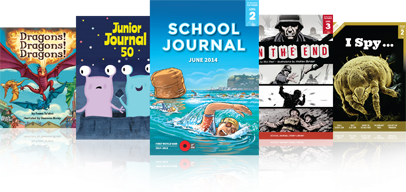
- Gold
- Green
- Purple
- Blue
- Turquoise
- 4
- 3
- 2
- 1
- 7
- 5
- 6
- 4
- 8
- 3
- 1
- English
- Social Sciences
- Science
- Health and Physical Education
- Technology
- The Arts
- Mathematics and Statistics
- Non-fiction
- Fiction
- None
- Nature of science
- Living world
- Planet Earth and beyond
- Material world
- Nature of technology
- Physical world
- Geometry and Measurement
- Statistics
- Technological knowledge
- Use evidence
- Engage with science
- Critique evidence
- Gather and interpret data
- Articles
- Stories
- Poems
- Plays
Search results
153 items - Showing 91 - 100
-
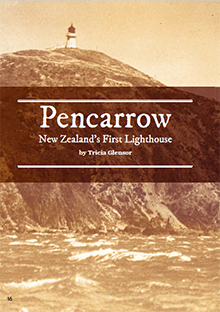
Pencarrow: New Zealand’s First Lighthouse
by Tricia Glensor
New Zealand’s coastline has always been a dangerous place for ships and boats. Early Māori knew that. Several traditional stories tell of waka being washed onto rocks in storms. Since the 1790s, when the first Pākehā reached New Zealand, more than 2,300 ships have been wrecked in New Zealand waters.
-
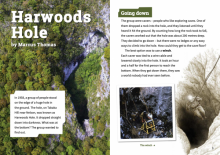
Harwoods Hole
by Marcus Thomas
In 1958, a group of intrepid cavers descended into Harwoods Hole, a huge vertical chasm on Takaka Hill. At the bottom, they discovered a spectacular environment, with beautiful stalactites and waterfalls. A month later, they discovered a second cave nearby. The cavers proved that the two cave systems were connected and created a way to travel between them. The themes of exploration and discovery make this article an enthralling read. It’s also an excellent introduction to the information texts students will be encountering more frequently as they progress through school.
-
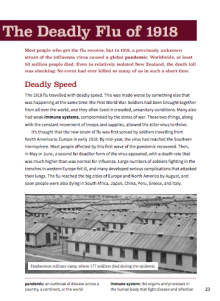
Pandemic: The Deadly Flu of 1918
by Renata Hopkins
Most students are aware of New Zealand’s participation in the First World War, but few will know of the flu pandemic that swept across the world in its aftermath. In New Zealand, the epidemic took over nine thousand lives in under two months – an appalling number, especially if compared with the eighteen thousand soldiers whose lives were lost to the war. This article conveys the horror of the event while imparting factual information about how the virus spread and how the government and communities tried to deal with it.
-
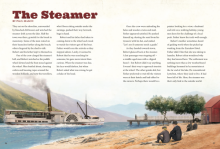
The Steamer
by Paul Mason
illustrated by Dede Putra
"They sat on the shoreline, surrounded by bleached driftwood, and watched the steamer drift across the lake."
-
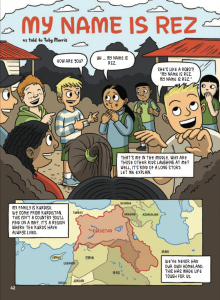
My Name is Rez
written and illustrated by Toby Morris
Rez Gardi was born in a Kurdish refugee camp in Pakistan and came to New Zealand as a young child, with her family. This graphic text is a memoir, looking back on her life so far. She is now a successful lawyer, a worker for refugees, and was the 2017 Young New Zealander of the year.
Information and tips for using comics in the classroom:
-
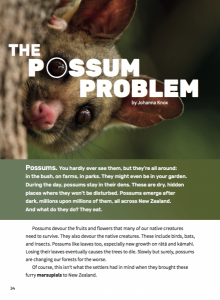
The Possum Problem
by Johanna Knox
illustrated by Adele Jackson
"Possums. You hardly ever see them, but they’re all around: in the bush, on farms, in parks. They might even be in your garden. During the day, possums stay in their dens. These are dry, hidden places where they won’t be disturbed. Possums emerge after dark, millions upon millions of them, all across New Zealand. And what do they do? They eat."
-
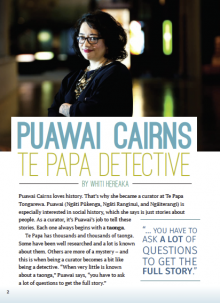
Puawai Cairns: Te Papa Detective
by Whiti Hereaka
This article describes the work of Puawai Cairns, a curator at Te Papa Tongarewa. Puawai believes that as a curator, her job is to tell stories about people: “Each one always begins with a taonga.”
-
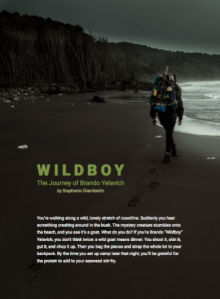
Wildboy: The Journey of Brando Yelavich
by Stephanie Chamberlin
One boy's journey and what he learnt along the way.
-
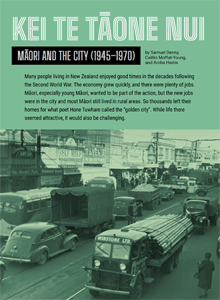
Kei te Tāone Nui: Māori and the City (1945–1970)
by Samuel Denny, Caitlin Moffat-Young, and Aroha Harris
The post-Second-World-War era in Aotearoa New Zealand saw one of the fastest rates of urban migration in the world, with Māori migrating to cities in large numbers to take advantage of new economic opportunities. The “golden city” offered much, but it came at a high price. Despite an unquestioned narrative in Pākehā communities that New Zealand’s race relations were world leading, Māori moving to the city encountered prejudice and discrimination at many levels. Māori responded to these challenges in multiple ways, for example, by establishing formal and informal groups that strengthened collective expression of Māori cultural values and practices. By gathering together to debate and take action on key issues, the seeds were sown for the modern Māori protest movement as well as the forging of a new urban Māori identity.
-
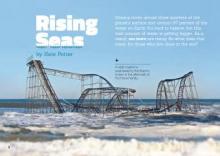
Rising Seas
by Kate Potter
Scientists know that global warming is leading to rising sea levels, but the rate of change and its likely impact are less clear. Scientists investigate what is happening and use the evidence to suggest how we might adapt to the changes.







 Literacy Online home
Literacy Online home
